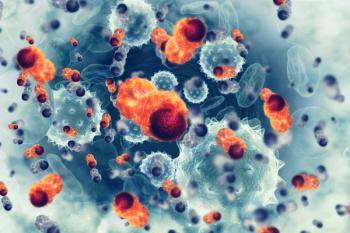
- Oncology Vol 30 No 4_Suppl_1
- Volume 30
- Issue 4_Suppl_1
(P006) A Retrospective Cohort Analysis of Accelerated Partial Breast Irradiation (APBI) and Whole-Breast Radiation in Patients With Early-Stage Breast Cancer: Toxicities and Clinical Outcomes in a Community Cancer Center
The rate of recurrence was comparable between patients undergoing APBI and whole-breast radiation. Acute side effects were significantly decreased in the APBI group.
Imraan Jan, Kamila Nowak, MD, Alexandra Hanlon, PhD, Diana Dickson-Witmer, MD, Emily Penman, MD, Christopher Koprowski, MD; Helen F. Graham Cancer Center; Sidney Kimmel Medical Center; University of Pennsylvania
PURPOSE: Radiation therapy (RT) following breast-conserving surgery (BCS) for early-stage breast cancer has been shown to significantly reduce the risk of recurrence and the risk of breast cancer–specific death. Recent efforts have focused on investigating the feasibility of accelerated partial breast irradiation (APBI) following BCS in low-risk patients. The aim of this retrospective study is to compare clinical outcomes of patients undergoing APBI and whole-breast irradiation.
METHODS: A total of 344 patients with ductal carcinoma in situ or early-stage breast cancer undergoing breast conservation treatment from January 2009 to January 2014 were reviewed. All APBI patients were treated with the Strut-Assisted Volume Implant (SAVI) device. Acute toxicities, such as radiodermatitis, edema, pain, fatigue, and infection, were recorded, as well as long-term outcomes. Comparisons across treatment groups were done using Fisher’s exact and chi-square tests for categorical variables and two-sample t-tests for continuous variables.
RESULTS: Median follow-up was 24.7 months for whole-breast patients and 26.7 months for APBI patients. The Kaplan-Meier 5-year estimated recurrence-free survival was 96%. There was no difference between the two cohorts. There were three local failures in the APBI cohort. There was one local failure in the whole-breast cohort, and two patients developed distant metastases. Acute toxicities, such as fatigue, pain, and radiodermatitis, were decreased in the APBI cohort as compared with the whole-breast cohort (P < .05). Tumor stage was the only variable to demonstrate a statistically significant difference in recurrence (P = .0043) on multivariate analysis.
CONCLUSIONS: The rate of recurrence was comparable between patients undergoing APBI and whole-breast radiation. Acute side effects were significantly decreased in the APBI group.
Proceedings of the 98th Annual Meeting of the American Radium Society -
Articles in this issue
Newsletter
Stay up to date on recent advances in the multidisciplinary approach to cancer.


















































































